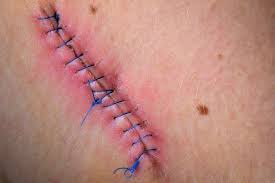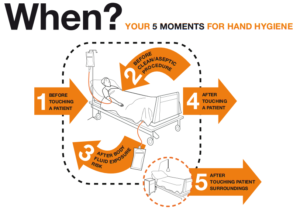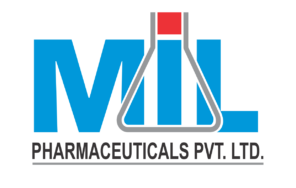About 10-20% of admitted Patients acquire Nosocomial Infections in India
The word Nosocomial is derived from the Greek word Noso which refers to Disease and komeian refers to take care of. Studies shows that hospital acquired infections are a major cause of morbidity and mortality (sickness/ no. of death).
What is Nosocomial infection?
Infections that patients acquire while receiving healthcare treatment for other conditions are called Nosocomial Infections. As a result, Nosocomial Infections are also called Hospital Acquired Infections or Hospital Associated Infections. These infections or any other active or incubating infection are absent in the patient at the time of hospital admission. These infections occur:
- up to 48 hours (about 2 days) after hospital admission
- up to 3 days after discharge
- up to 30 days (about 4 and a half weeks) after an operation
Factors affecting HAI include-
- Increased use of antibiotics
- Transmission of pathogens from medical staff
- In dwelling medical devices (Catheters, IV lines, Ventilators)
- Surgical Instruments
- Patient Surroundings

Types of Healthcare-associated Infections
Modern healthcare employs many types of invasive devices and procedures to treat patients and to help them recover. Infections can be associated with the devices used in medical procedures, such as catheters or ventilators.
These healthcare-associated infections (HAIs) include central line-associated bloodstream infections, catheter-associated urinary tract infections, and ventilator-associated pneumonia. Infections may also occur at surgery sites, known as surgical site infections
Central Line-associated Bloodstream Infection (CLABSI)
A central line-associated bloodstream infection (CLABSI) is a serious infection that occurs when germs (usually bacteria or viruses) enter the bloodstream through the central line. Strict protocol when inserting the line helps to make sure the line remains sterile and a CLABSI does not occur. For more details click here


Surgical Site Infection (SSI)
A surgical site infection is an infection that occurs after surgery in the part of the body where the surgery took place. Surgical site infections can sometimes be superficial infections involving the skin only. Other surgical site infections are more serious and can involve tissues under the skin, organs, or implanted material. For more details click here
Catheter-associated Urinary Tract Infections (CAUTI)
A urinary tract infection (UTI) is an infection involving any part of the urinary system, including urethra, bladder, ureters, and kidney. UTIs are the most common type of healthcare-associated infection reported. Among UTIs acquired in the hospital, approximately 75% are associated with a urinary catheter, which is a tube inserted into the bladder through the urethra to drain urine. For more details click here
Ventilator-associated Pneumonia (VAP)
Ventilator-associated pneumonia is a lung infection that develops in a person who is on a ventilator. A ventilator is a machine used to help a patient breathe by giving oxygen through a tube placed in a patient’s mouth or nose, or through a hole in the front of the neck. An infection may occur if germs enter through the tube and get into the patient’s lungs. For more details click here
Prevention of HAI
HAI are preventable through strict adherence to guidelines by health care workers. Infection prevention and control programs are rooted in quality improvement activities that use protocols and interventions to decrease the risk of acquisition and transmission of infection within healthcare settings.
Hand hygiene is the most important aspect of infection control and prevention of healthcare-associated infection (HAI).


Personal protective equipment such as gloves, gowns, masks, and eye protection help protect from blood and body fluids.
Monitoring and enforcing appropriate cleaning regimens are recommended to prevent bacterial transmission from the environment.
Antimicrobial stewardship program – Overuse of antibiotics not only places patients at risk for developing medication side effects and CDI but also contributes to the heightening problem of antimicrobial resistance.
Patient Education – Patients should be informed about the potential risk of developing HAI when receiving care.
Conclusion
Nosocomial infections form one of the most challenging tasks to deal with in a hospital setting. A significant percentage of HAI are preventable by simply following up various protocols which when supported by judicious antibiotic use can declutter the severity of the problem. Organized infection control measures, trained hospital staff, and continuous surveillance of HAI in healthcare settings will help deal with nosocomial infections.
Reference:
- Thakkar J, Shanoo A, Gupta S, et al. (November 09, 2023) The Pattern and Impact of Hospital-Acquired Infections and Its Outlook in India. Cureus 15(11): e48583. doi:10.7759/cureus.48583
- Sikora A, Zahra F. Nosocomial Infections. [Updated 2023 Apr 27]. In: StatPearls [Internet]. Treasure Island (FL): StatPearls Publishing; 2024 Jan-. Available from: https://www.ncbi.nlm.nih.gov/books/NBK559312/
- Ken Inweregbu, Jayshree Dave, Alison Pittard, Nosocomial infections, Continuing Education in Anaesthesia Critical Care & Pain, Volume 5, Issue 1, 2005, Pages 14-17, ISSN 1743-1816, https://doi.org/10.1093/bjaceaccp/mki006 (https://www.sciencedirect.com/science/article/pii/S1743181617305759)
- Nair V, Sahni AK, Sharma D, Grover N, Shankar S, Chakravarty A, Patrikar S, Methe K, Jaiswal SS, Dalal SS, Kapur A, Verma R, Prakash J, Gupta A, Bhansali A, Batura D, Rao GG, Joshi DP, Chopra BK. Point prevalence & risk factor assessment for hospital-acquired infections in a tertiary care hospital in Pune, India. Indian J Med Res. 2017 Jun;145(6):824-832. doi: 10.4103/ijmr.IJMR_1167_15. PMID: 29067985; PMCID: PMC5674553.
- Healthcare-Associated Infections (HAI’s), Centers for Disease Control & Prevention https://www.cdc.gov/hai/index.html

